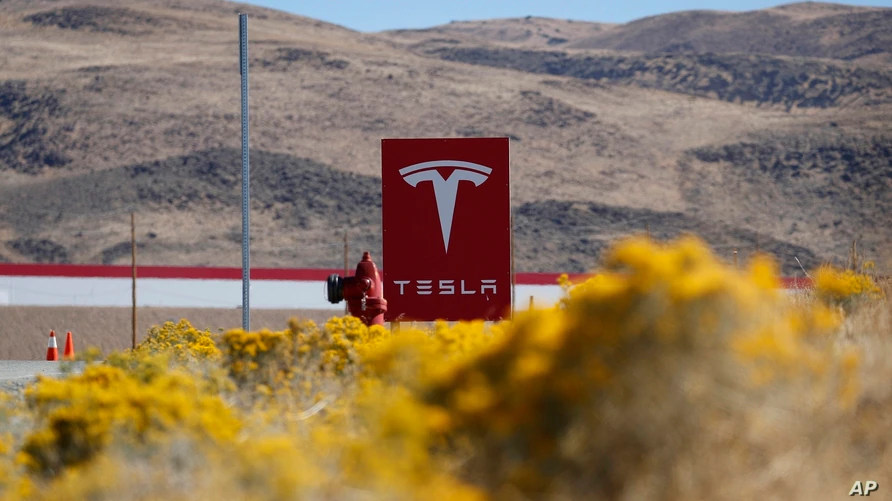 While the EV boom has been growing for years, 2021 could be the year electric starts to take over everything.
While the EV boom has been growing for years, 2021 could be the year electric starts to take over everything.
And it could happen much sooner than most people realize, as some of the biggest names are already hopping on board.
Amazon has already started making deliveries with electric vans in Los Angeles, as they’ve agreed to purchase 100,000 vans from EV startup, Rivian.
The United States Postal Service just signed a 10-year, multi-billion dollar contract with Oshkosh Defense to produce thousands of electric mail trucks.
And United Airlines just placed an incredible $1 billion order with EV manufacturer, Archer, for a fleet of electric air taxis.
Legacy automakers are all making the shift too, rolling out their line of electric vehicles one by one.
Ford is set to double their investment in EVs to $22 billion, and they’re planning to release their electric version of the Mustang and the F-150, the most popular vehicle in the U.S.
Volkswagen is calling their 2021 electric crossover, the ID.4, “the most important new Volkswagen debut since the Beetle.”
And General Motors has even announced they’ll stop making gas-powered vehicles altogether by 2035.
Now, Biden has even announced plans to transition all government fleet vehicles to EVs.
This electric revolution has already led to monster gains for EV companies throughout 2020.
The EV van startup, Workhorse, saw gains of over 551%…
Tesla’s shares shot up a massive 740%…
And Blink Charging soared for incredible 1,740% gains last year.
Now, many investors are looking ahead for the next big thing in the EV markets.
And one Canadian company in EV related business has seen its momentum building steadily over the last year.
Facedrive (TSXV:FD,OTC:FDVRF) has been acquiring key pieces left and right, adding them to their electric ecosystem alongside their signature ridesharing service.
With these acquisitions, they’ve brought the EV boom into food delivery, car subscriptions, and more.
This is why they’ve seen shares jump an incredible 969% over the last year…
And now that Facedrive has announced a major government investment in their technology, their business could be set to take off in 2021.
Here are 3 reasons why you should be paying attention to Facedrive:
1 – Bringing EVs to the Gig Economy
Many of the biggest EV stories of late have come from either the automakers rolling out new models or companies working on building out the infrastructure…
But Facedrive is taking a different approach.
Instead, they’re using the cars those automakers have already made and turning them into an entire EV-related ecosystem.
So just like Uber has built their $96 billion business off leveraging cars they never manufactured, bought, or sold…
Facedrive (TSXV:FD,OTC:FDVRF) connects customers looking to hail a ride, providing an eco-friendly solution.
Their model is simple.
When customers request a ride, they get their pick between riding to their destination in a standard gas-powered car, a hybrid or an electric vehicle (for no extra charge to them).
Then Facedrive’s algorithm crunches the numbers, setting aside a portion of the fare to plant trees, offsetting the carbon footprint from the ride.
Through next-gen technology and partnerships, they’re bringing EVs into the gig economy and making a splash.
That’s because Facedrive has also added a food delivery service, which has taken off since so many have been stuck at home during global lockdowns.
Today, they’re delivering over 4,100 orders per day on average. And after growing to 19 major cities, they plan to expand to more cities throughout the U.S. and Canada soon.
But they’ve also gone beyond applying EVs to the gig economy and are offering a way for people to get behind the wheel themselves without the usual sticker shock.
2 – Reinventing The Standard Model
At this point there’s no question there’s a growing demand for EVs from consumers, as this trend has spread from Europe and Asia and through North America.
And almost 3 out of 4 younger buyers even say they’re willing to pay higher prices to own an electric vehicle.
But with Facedrive’s acquisition of Steer, you can get the benefits without the large upfront cost.
Facedrive recently acquired the EV subscription company from the largest clean energy producer in the United States, and they’re aiming to change the way people think about using EVs.
Steer has combined the Netflix subscription model with the EV boom to flip the traditional car ownership model on its head.
With Facedrive’s acquisition of Steer, customers pay a simple monthly fee like with Netflix, and they get access to their choice of EVs from a fleet at their disposal.
So they can borrow one whenever they need it instead of buying an EV outright – and at a fraction of the cost.
They’re up and running in the Washington D.C. market already…
And they’ve seen so much success there that they’ve decided to expand further north, to roll out the service in Toronto as well.
With two of the largest metro areas in North America in the mix, Facedrive has started paving the path for a completely unique way to save drivers money in the EV boom.
But their biggest announcement recently came thanks to their willingness to think outside the box and serve the most pressing need we’re seeing today.
3 – Taking On The Biggest Challenges
While Facedrive (TSXV:FD,OTC:FDVRF) has been busy helping bring EVs to mainstream use in creative ways, they’ve also found a way to help address the issue we’ve all been facing for the last year.
By partnering with the University of Waterloo, they’ve created a wearable contact tracing technology called TraceSCAN.
It’s designed to help alert those without cell phones after they’ve been in contact with someone who’s tested positive for COVID-19.
That’s great news for those working in schools, airports, mining, long-term care facilities, and more.
And the demand for TraceSCAN has surged in recent months, as businesses work to open safely and responsibly.
Facedrive has now signed an agreement with Canada’s largest airline, Air Canada, to use this breakthrough technology.
They’re also in discussions to continue TraceSCAN’s growth with major multinational corporations.
But perhaps the most exciting news came from a government announcement in Canada just weeks ago.
In February, the Ontario government announced they’re investing $2.5 million to help speed up the deployment of TraceSCAN to more users.
This means TraceSCAN’s technology has gotten another vote of confidence in their innovative technology… to the tune of millions from the government.
As governments and businesses around the world are doing whatever they can to stop the spread of the virus, this major announcement could help bring attention to Facedrive’s TraceSCAN technology…
Applying more pressure to other organizations and governments to act responsibly and start investing more seriously in contact tracing technology.
Setting Up For Electric Everything in 2021
As 2021 heats up, we’re seeing that the EV boom isn’t just limited to manufacturing sedans anymore.
It involves building an entire electric ecosystem and re-imagining what transportation looks like on all fronts.
That’s why Facedrive (TSXV:FD,OTC:FDVRF) aims see their growth wave continue as they bring EVs to ridesharing, food delivery, and beyond.
Here are a few other companies who could profit in the electric future:
Tesla (NASDAQ:TSLA) has been one of the most exciting stories on Wall Street for the past two years. And that’s largely thanks to its CEO, Elon Musk. As a visionary in the tech world, Musk built his empire on PayPal and then pivoted to a cause closer to his heart, Tesla. Musk has had his eye on prize long before the green energy hype started building. In fact, he released the first Tesla Roadster back in 2008, making electric vehicles desirable when people were laughing at first-gen electric vehicles. Since then, Tesla’s stock has skyrocketed by over 14,000%. Largely thanks to its ambitious approach to a greener tomorrow
Tesla isn’t just about cars, however, it’s diving head first into the battery market, as well. And by extension, could completely transform renewable energy as we know it. Tesla’s battery technology is a game-changer because batteries will be the first big step towards decentralized electric grids, another innovation fueled by the dramatic rise of blockchain technology, another cause that Musk is passionate about.
Elon Musk is a major proponent of bitcoin, like his tech industry peer Square and Twitter’s Jack Dorsey. Musk made a number of posts on Dorsey’s Twitter platform highlighting the benefits of cryptocurrency, and even put his own money where his mouth is, announcing that Tesla would be investing $1.5 billion into bitcoin, with plans to begin accepting bitcoin payments for Tesla products in the near to medium-term
Elon Musk is truly a visionary of this decade. From his electric vehicle innovations and space ambitions to his forward-thinking approach on cryptocurrencies, Elon Musk may well become the first trillionaire, and Tesla shareholders are set to ride the wave.
NIO Limited (NYSE:NIO) has had an incredible year, taking the market by storm. Just a year ago, no one could have imagined how successful the company was going to be. In fact, many analysts were ready to leave it for dead. But the Chinese Tesla rival powered on, blew away estimates, and most importantly, kept its balance sheet in line. And it’s paid off. In a big way.
Nio has made all the right moves over the past year to win over investors and turn heads on the streets and in the marketplace. On November 18th, NIO revealed a pair of sedans that even the biggest Tesla die-hard would struggle to pass up. The vehicles, meant to compete with Tesla’s Model 3, could be just what the company needs to pull back control of its local market from Elon Musk’s electric vehicle giant.
In addition to its automotive push, however, Nio, Tesla’s largest competitor in China, has also started to offer a batteries-as-a-service concept, in which car buyers can ‘lease’ the battery of their vehicle and save as much as $10,000 on the price of a new vehicle, while also offering buyers the option to swap batteries after a few years of use. And that’s huge news in the lithium world, because it will mean give miners even greater incentive to sign deals with the battery innovator.
General Motors (NYSE:GM) just started a joint venture with Korea’s LG Chem to mass produce next-gen battery cells for electric vehicles, together investing $2.3 billion over the next few years.
That’s not all its working on, either. In October, auto industry legend, GM announced that it’s majority-owned subsidiary, Cruise, has just received approval from the California DMV to test its autonomous vehicles without a driver. And while they’re not the first to receive such an approval, it’s still huge news for GM.
Cruise CEO Dan Ammann wrote in a Medium post, “Before the end of the year, we’ll be sending cars out onto the streets of SF — without gasoline and without anyone at the wheel. Because safely removing the driver is the true benchmark of a self-driving car, and because burning fossil fuels is no way to build the future of transportation.”
Ford (NYSE:F) is another Detroit automaker making the jump to EVs – and seeing shares jump in the process. They recently announced they’ll be boosting their spending on EVs to $27 billion through mid-decade. That big investment includes plans of their own to develop an electric cargo van and a plug-in version of their bestseller F-150 pickup truck.
Ford isn’t going to be left out of the autonomous vehicle boom, either. The company, for its part, has recently revealed plans to launch its self-driving business in 2022. The new vehicles, in partnership with Argo AI, a Philadelphia-based autonomous vehicle startup, will include major upgrades from advanced Lidar technology and high resolution cameras. Ford plans to test these vehicles in Austin, Texas; Detroit; Miami; Palo Alto, California; Pittsburgh and Washington, D.C. as early as this month.
John Davis, chief engineer of Ford’s autonomous vehicle subsidiary explained, “We’re confident that we’re on the path to launching a safe, reliable and affordable service. And, we look forward to telling you more about how this service will ultimately help make people’s lives better.”
Blink Charging (NASDAQ:BLNK) was one of the darlings of the EV boom last year because of its expansion in EV charging technology. With their chargers deployed at airports, car dealers, hospitals, restaurants, retailers, and schools across the nation, Blink recently saw shares jump 76% in just one month. A wave of new deals, including a collaboration with EnerSys and another with Envoy Technologies to deploy electric vehicles and charging stations adds further support to its success.
Michael D. Farkas, Founder, CEO and Executive Chairman of Blink noted, “This is an exciting collaboration with EnerSys because it combines the industry-leading technologies of our two companies to provide user-friendly, high powered, next-generation charging alternatives. We are continuously innovating our product offerings to provide more efficient and convenient charging options to the growing community of EV drivers.”
In addition to the company’s string of high-profile deals, Blink is also consistently posting promising revenues. In fact, earlier this month, the company noted that third-quarter revenue had increased by as much as 18% from the year before despite disruptions caused by the COVID-19 pandemic.
Canada is not likely to be left out of this boom, either. GreenPower Motor (TSX:GPV) is an exciting company that produces larger-scale electric transportation. Right now, it is primarily focused on the North American market, but the sky is the limit as the pressure to go green grows. GreenPower has been on the frontlines of the electric movement, manufacturing affordable battery-electric busses and trucks for over ten years. From school busses to long-distance public transit, GreenPower’s impact on the sector can’t be ignored.
NFI Group (TSX:NFI) is another one of Canada’s most exciting companies in the electric vehicle space. It produces transit busses and motorcycles. NFI had a difficult start to the year, but it since cut its debt and begun to address its cash flow struggles in a meaningful way. Though it remains down from January highs, NFI still offers investors a promising opportunity to capitalize on the electric vehicle boom.
Recently, NFI has seen an uptick in insider stock purchases which is often a sign that the board and management strongly believe in the future of the company. In addition to its increasingly positive financial reports, it is also one of the few in the business that actually pay dividends out to its investors.
Lithium Americas Corp. (TSX:LAC) is one of North America’s most important and successful pure-play lithium companies. In a way, Lithium Americas is literally fueling the green energy boom. With two world-class lithium projects in Argentina and Nevada, Lithium Americas is well-positioned to ride the wave of growing lithium demand in the years to come. It’s already raised nearly a billion dollars in equity and debt, showing that investors have a ton of interest in the company’s ambitious plans, and it will likely continue its promising growth and expansion for years to come.
It’s not ignoring the growing demand from investors for responsible and sustainable mining, either. In fact, one of its primary goals is to create a positive impact on society and the environment through its projects. This includes cleaner mining tech, strong workplace safety practices, a range of opportunities for employees, and strong relationships with local governments to ensure that not only are its employees being taken care of, but locals as well.
Celestica (TSX:CLS) is closely tied to the green energy boom. Celestica’s wide range of products includes but is not limited to communications solutions, enterprise and cloud services, aerospace and defense products, renewable energy and enough health technology.
Thanks to its exposure to the renewable energy market, Celestica’s future is tied hand-in-hand with the green energy boom that’s sweeping the world at the moment. It helps build smart and efficient products that integrate the latest in power generation, conversion and management technology to deliver smarter, more efficient grid and off-grid applications for the world’s leading energy equipment manufacturers and developers.
Maxar Technologies (TSX:MAXR) is a high flying tech stock to watch in the energy transition. Why? Its wholelly-owned subsidiary, SSL, a designer and manufacturer of satellites used by government and commercial enterprises, has pioneered research in electric propulsion systems, lithium-ion power systems and the use of advanced composites on commercial satellites. These innovations are key because they allow satellites to spend more time in orbit, reducing costs and increasing efficiency. And it’s greener than traditional power sources.
Thanks to Maxar’s incredible tech and innovative approach to the already-extremely complicated space industry, the company has seen its share price climb where many of its peers have struggled. In fact, in just the past two years, Maxar has seen its share price increase by well over 1000%. And as the company secures more deals in the great beyond, the innovative firm will likely maintain its upward trajectory for some time.




0 Comments